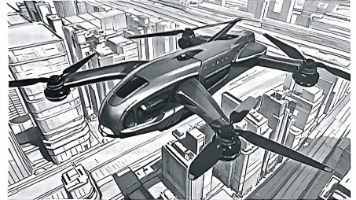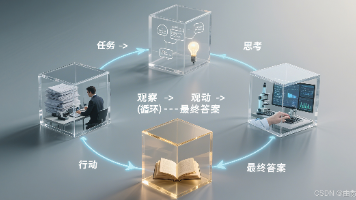智能制造:AI和大数据如何重塑制造业
随着5G、边缘计算和数字孪生技术的发展,人工智能在制造业中的应用将更加深入。大数据为人工智能提供了丰富的信息源,使其能够做出更精准的决策。通过整合销售数据、市场趋势和供应商信息,人工智能能够提供更准确的库存建议,减少库存成本同时避免缺货。深度学习模型通过分析产品图像,能够识别肉眼难以察觉的微小缺陷,减少人工检查的工作量。通过模拟不同生产配置的效果,系统能够推荐最佳的生产参数和调度策略。通过以上方法
人工智能与大数据在制造业的应用
人工智能和大数据技术在制造业中的应用正在改变传统的生产模式。通过实时数据采集、分析和预测,企业能够实现生产线自动化、提高效率并减少浪费。大数据为人工智能提供了丰富的信息源,使其能够做出更精准的决策。
生产线自动化的数据来源
制造过程中涉及多种数据来源,包括传感器数据、设备日志、质量检测记录和供应链信息。这些数据通过物联网设备实时传输到中央数据处理平台,为后续分析提供基础。常见的数据类型包括温度、压力、振动、能耗和生产速度。
# 示例:模拟生产线传感器数据采集
import pandas as pd
import numpy as np
# 生成模拟数据
np.random.seed(42)
data = {
'timestamp': pd.date_range(start='2023-01-01', periods=1000, freq='S'),
'temperature': np.random.normal(25, 2, 1000),
'pressure': np.random.normal(100, 5, 1000),
'vibration': np.random.normal(0.5, 0.1, 1000),
'defect_flag': np.random.choice([0, 1], size=1000, p=[0.95, 0.05])
}
df = pd.DataFrame(data)
print(df.head())
实时数据分析与异常检测
利用机器学习算法对生产数据进行分析,可以实时检测设备异常或潜在故障。常见的算法包括聚类分析、时间序列预测和深度学习模型。异常检测能够减少停机时间并提高整体设备效率。
# 示例:使用隔离森林进行异常检测
from sklearn.ensemble import IsolationForest
# 提取特征
X = df[['temperature', 'pressure', 'vibration']]
# 训练模型
model = IsolationForest(contamination=0.05, random_state=42)
model.fit(X)
# 预测异常
df['anomaly'] = model.predict(X)
print(df[df['anomaly'] == -1].head())
预测性维护的实施
通过分析历史设备数据,人工智能能够预测设备可能出现的故障并提前安排维护。这种方法比传统的定期维护更高效,能够显著降低维护成本并延长设备寿命。常用的技术包括生存分析、回归模型和神经网络。
# 示例:使用LSTM进行设备剩余寿命预测
from tensorflow.keras.models import Sequential
from tensorflow.keras.layers import LSTM, Dense
# 数据预处理
def create_sequences(data, window_size):
sequences = []
for i in range(len(data) - window_size):
sequences.append(data[i:i+window_size])
return np.array(sequences)
window_size = 10
X = create_sequences(df[['temperature', 'pressure', 'vibration']].values, window_size)
y = df['defect_flag'][window_size:].values
# 构建LSTM模型
model = Sequential([
LSTM(50, input_shape=(window_size, 3)),
Dense(1, activation='sigmoid')
])
model.compile(optimizer='adam', loss='binary_crossentropy', metrics=['accuracy'])
model.fit(X, y, epochs=10, batch_size=32, validation_split=0.2)
生产流程优化与调度
人工智能可以分析生产瓶颈并提出优化方案。通过模拟不同生产配置的效果,系统能够推荐最佳的生产参数和调度策略。线性规划、强化学习和遗传算法是常用的优化技术。
# 示例:使用遗传算法优化生产调度
from deap import base, creator, tools, algorithms
import random
# 定义问题
creator.create("FitnessMin", base.Fitness, weights=(-1.0,))
creator.create("Individual", list, fitness=creator.FitnessMin)
toolbox = base.Toolbox()
toolbox.register("attr_int", random.randint, 1, 5)
toolbox.register("individual", tools.initRepeat, creator.Individual, toolbox.attr_int, n=10)
toolbox.register("population", tools.initRepeat, list, toolbox.individual)
def evaluate(individual):
# 模拟评估函数:最小化总生产时间
return sum(individual),
toolbox.register("mate", tools.cxTwoPoint)
toolbox.register("mutate", tools.mutUniformInt, low=1, up=5, indpb=0.2)
toolbox.register("select", tools.selTournament, tournsize=3)
toolbox.register("evaluate", evaluate)
population = toolbox.population(n=50)
algorithms.eaSimple(population, toolbox, cxpb=0.5, mutpb=0.2, ngen=40, verbose=False)
best_individual = tools.selBest(population, k=1)[0]
print("最优调度方案:", best_individual)
质量控制的智能化
计算机视觉和机器学习技术可以自动检测产品缺陷,提高质量控制的准确性和效率。深度学习模型通过分析产品图像,能够识别肉眼难以察觉的微小缺陷,减少人工检查的工作量。
# 示例:使用CNN进行产品缺陷检测
from tensorflow.keras.preprocessing.image import ImageDataGenerator
from tensorflow.keras.applications import ResNet50
from tensorflow.keras.layers import Dense, GlobalAveragePooling2D
from tensorflow.keras.models import Model
# 构建迁移学习模型
base_model = ResNet50(weights='imagenet', include_top=False)
x = base_model.output
x = GlobalAveragePooling2D()(x)
x = Dense(1024, activation='relu')(x)
predictions = Dense(1, activation='sigmoid')(x)
model = Model(inputs=base_model.input, outputs=predictions)
for layer in base_model.layers:
layer.trainable = False
model.compile(optimizer='adam', loss='binary_crossentropy', metrics=['accuracy'])
# 假设有图像数据生成器
train_datagen = ImageDataGenerator(rescale=1./255)
train_generator = train_datagen.flow_from_directory(
'data/train',
target_size=(224, 224),
batch_size=32,
class_mode='binary'
)
model.fit(train_generator, epochs=10)
供应链与库存优化
大数据分析可以帮助企业优化供应链管理,预测原材料需求和产品需求波动。通过整合销售数据、市场趋势和供应商信息,人工智能能够提供更准确的库存建议,减少库存成本同时避免缺货。
# 示例:使用时间序列预测原材料需求
from statsmodels.tsa.arima.model import ARIMA
# 假设有历史需求数据
demand_data = pd.Series([100, 120, 110, 130, 125, 140, 150, 145, 160, 170],
index=pd.date_range('2023-01-01', periods=10))
# 建立ARIMA模型
model = ARIMA(demand_data, order=(1,1,1))
results = model.fit()
# 预测未来5天需求
forecast = results.forecast(steps=5)
print("需求预测:", forecast)
能源管理与可持续发展
人工智能可以优化能源消耗,分析生产过程中的能源使用模式并提出改进建议。通过实时监测设备能耗,系统能够识别节能机会并自动调整生产计划以减少碳排放。
# 示例:能源消耗聚类分析
from sklearn.cluster import KMeans
# 假设有能耗数据
energy_data = df[['temperature', 'pressure', 'vibration']].copy()
energy_data['energy_usage'] = df['temperature'] * 0.5 + df['pressure'] * 0.3 + df['vibration'] * 0.2
# 聚类分析
kmeans = KMeans(n_clusters=3, random_state=42)
energy_data['cluster'] = kmeans.fit_predict(energy_data[['energy_usage']])
# 分析各集群特征
print(energy_data.groupby('cluster')['energy_usage'].describe())
实施挑战与建议
尽管人工智能和大数据在制造业中具有巨大潜力,但在实施过程中仍面临数据质量、系统集成和人才短缺等挑战。建议企业从小的试点项目开始,逐步扩展应用范围,同时注重数据治理和员工培训。与专业技术供应商合作可以加速实施过程并降低风险。
未来发展趋势
随着5G、边缘计算和数字孪生技术的发展,人工智能在制造业中的应用将更加深入。实时决策能力将得到进一步提升,使生产线能够更加智能地适应变化的市场需求。同时,可解释人工智能的发展将增加系统透明度,提高用户信任度。
通过以上方法和技术,制造业企业能够充分利用大数据和人工智能实现生产线自动化和优化,提高竞争力并适应快速变化的市场环境。
更多推荐
 已为社区贡献9条内容
已为社区贡献9条内容









所有评论(0)